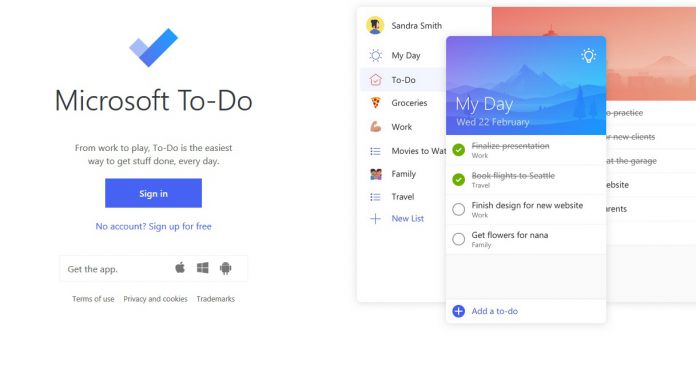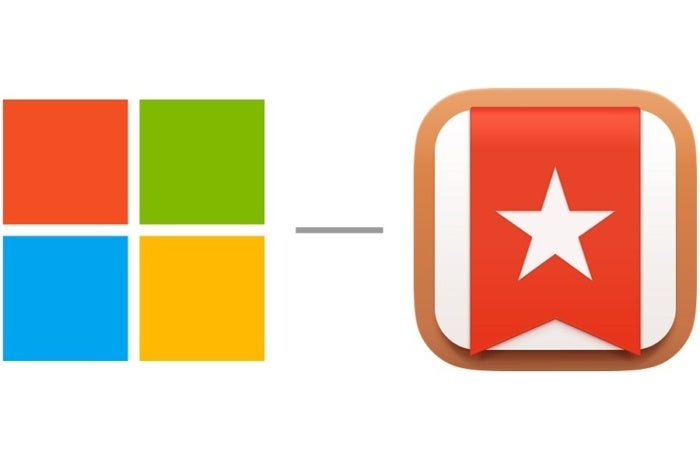When Microsoft acquired the beloved to-do app called Wunderlist in 2015, it said it would discontinue Wunderlist permanently, but only after rebuilding all the best features of that app into a new. Use Azure AD to enable user access to Wunderlist. Requires an existing Wunderlist subscription. A shabby substitute for Wunderlist I've been using Wumderlist for years and have absolutely loved that product. So, while I'm happy for the team that they were aquired by Microsoft, I am really frustrated with the feature set of MS To Do as compared to Wunderlist. For example, Wunderlist let you type in a task with a bulit in reminder.
-->Summary: How organizations in the Office 365 U.S. Government Community Cloud (GCC) can enable Outlook for iOS and Android for their Exchange Online users.


Outlook for iOS and Android is fully architected in the Microsoft Cloud and meets the security and compliance requirements needs of all United States Government customers when the mailboxes reside in Exchange Online.
For customers with Exchange Online mailboxes operating in the Government Community Cloud (GCC Moderate, GCC High or Department of Defense), Outlook for iOS and Android leverages the native Microsoft sync technology. This architecture is FedRAMP-compliant (defined by NIST Special Publication 800-145) and approved, and meets GCC High and DoD requirements DISA SRG Level 4 (GCC-High) and Level 5 (DoD), Defense Federal Acquisition Regulations Supplement (DFARS), and International Traffic in Arms Regulations (ITAR), which have been approved by a third-party assessment organization and are FISMA-compliant based on the NIST 800-53 rev 4.
For more information, please see the Office 365 FedRAMP System Security plan located in the FedRAMP Audit Reports section of the Microsoft Service Trust Portal.
Important
Customers operating in the Government Community Cloud may have user mailboxes that also reside on-premises via an Exchange hybrid topology. Accessing on-premises mailboxes with Outlook for iOS and Android does not utilize an architecture that is FedRAMP-compliant. For more information on this architecture, see Using Basic authentication with Outlook for iOS and Android.
This article covers how to:
Enable Outlook for iOS and Android for Office 365 GCC customers.
Unlock non-FedRAMP compliant features, if needed.
Enabling Outlook for iOS and Android for Office 365 GCC customers
GCC (Moderate, High, and Department of Defense) customers can leverage Outlook for iOS and Android without any special configuration.
For Office 365 GCC customers who are not currently using Outlook for iOS and Android, enabling the app requires unblocking Outlook for iOS and Android in the organization, downloading the app on users' devices, and having end users add their account on their devices.
1. Unblock Outlook for iOS and Android

Remove any restrictions placed within your Exchange environment that may be blocking Outlook for iOS and Android by updating your Exchange mobile device access rules or any relevant Azure Active Directory Conditional Access policies so that the app is no longer blocked. See Securing Outlook for iOS and Android in Exchange Online for information about enabling Outlook as the only mobile messaging client in an organization.
2. Download and install Outlook for iOS and Android

End users need to install the app on their devices. How the installation happens depends on whether or not the devices are enrolled in a unified endpoint management (UEM) solution, such as Microsoft Intune. Users with enrolled devices can install the app through their UEM solution, like the Intune Company Portal. Users with devices that are not enrolled in an UEM solution can search for 'Microsoft Outlook' in the Apple App Store or Google Play Store and download it from one of those locations.
Note
To leverage app-based conditional access policies, the Microsoft Authenticator app must be installed on iOS devices. For Android devices, the Intune Company Portal app is leveraged. For more information, see App-based conditional access with Intune.
Disabled services and features
By default, certain services and features of Outlook for iOS and Android are disabled automatically for the Office 365 U.S. Government Community Cloud (GCC) because they do not meet FedRAMP requirements:
In-app support: Users are not able to submit support tickets from within the app or upload diagnostic data using Collect Diagnostics. They should contact their internal help desk and provide logs (via the Share Diagnostics Logs option in Setting -> Help). If necessary, the organization's IT department can then contact Microsoft Support directly.
Important
Setting OutlookMobileGCCRestrictionsEnabled to false allows submission of support, diagnostic, or crash data to be sent to Microsoft through in-app support or by using Collect Diagnostics. The data are uploaded to Microsoft systems that are outside of the Office 365 GCC compliance boundary, including the Office 365 FedRAMP boundary. Customers should update organizational training and policy materials to instruct users to avoid including any sensitive US government information as part of the in-app support submission.
In-app feature requests: Users are not able to submit in-app feature requests. Instead, users are directed to use Outlook UserVoice.
Multiple accounts: Only the user's Office 365 GCC account and OneDrive for Business account can be added to a single device. Personal accounts cannot be added. Customers can use another device for personal accounts, or an Exchange ActiveSync client from another provider.
Calendar Apps: Calendar apps (Facebook, Wunderlist, Evernote, Meetup) are not available with GCC accounts.
Add-Ins: Add-ins are not available with GCC accounts.
Storage Providers: Only the GCC account's OneDrive for Business storage account can be added within Outlook for iOS and Android. Third-party storage accounts (for example, Dropbox, Box) cannot be added.
Office Lens: Office Lens technology (for example, scanning business cards and taking pictures) included in Outlook for iOS and Android is not available with GCC accounts.
File picker: The file picker used for adding attachments during email composition is limited to email attachments, iCloud & Device, OneDrive for Business files, and SharePoint sites. The Recent Files list is limited to email attachments.
TestFlight: GCC accounts are not able to access pre-release features when using the TestFlight version of Outlook for iOS.
Executing the below Exchange Online cmdlet enables GCC users using Outlook for iOS and Android access to the above features and services that are not FedRAMP compliant:
At any time, access to the above features can be revoked by resetting the parameter back to the default value:
Changing this setting typically takes effect within 48 hours. As this setting is a tenant-based change, all Outlook for iOS and Android users in the GCC organization are affected.
For more information on the cmdlet, see Set-OrganizationConfig.
Services and features not available
Certain services and features of Outlook for iOS and Android are not available for the Office 365 U.S. Government Community Cloud (GCC) because they do not meet FedRAMP requirements:
Wunderlist Bought By Microsoft
Location services: Bing location services are not available with GCC accounts. Features that rely on location services, like Cortana Time To Leave, are also unavailable.
Privacy settings: Privacy settings cannot be configured through the Office cloud policy service.
Play My Emails: Play My Emails is not available for GCC accounts.
To Do: To Do is currently not available for GCC accounts.
Wunderlist Microsoft To Do
For more information on the cmdlet, please see Set-OrganizationConfig.
